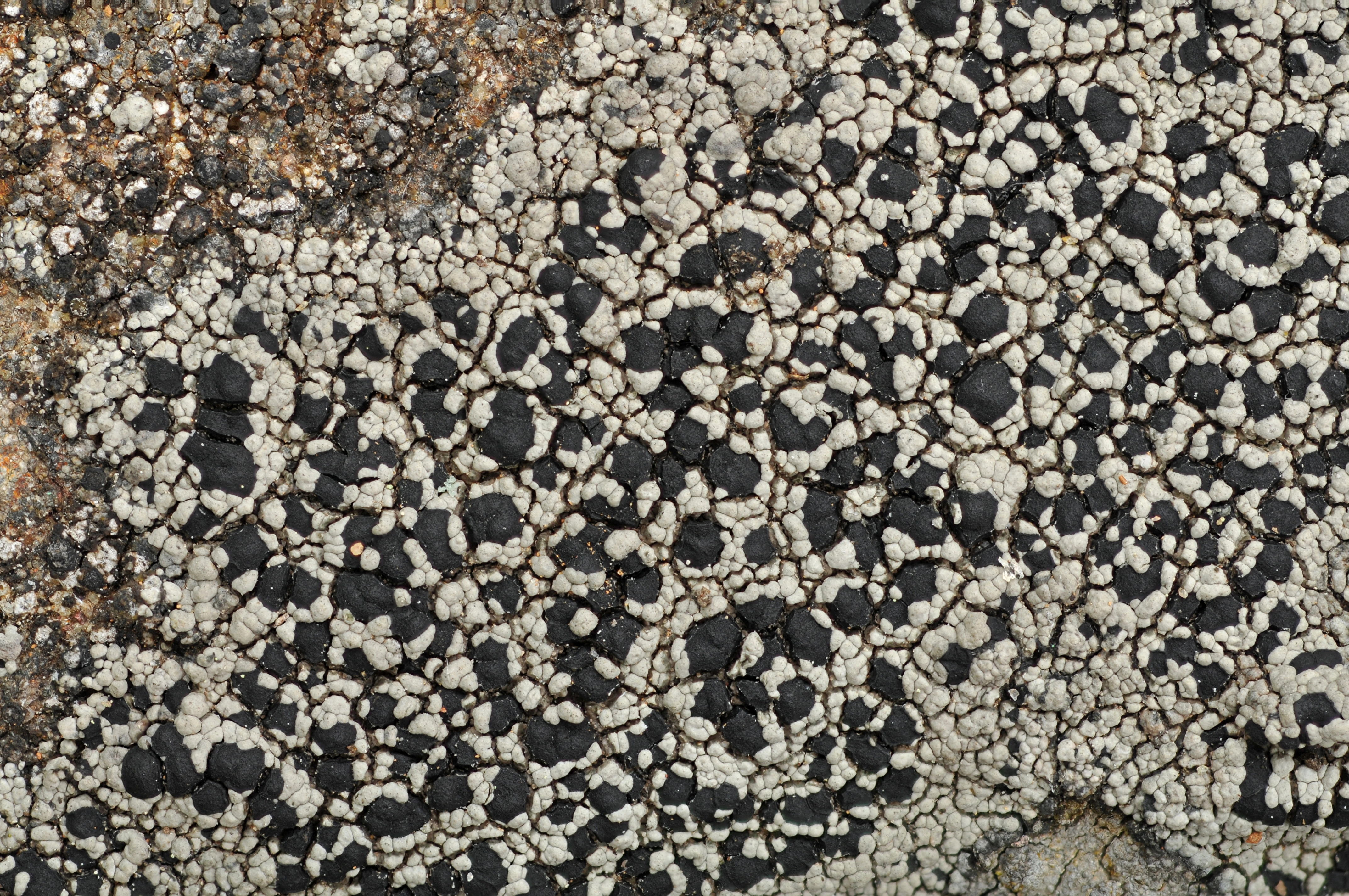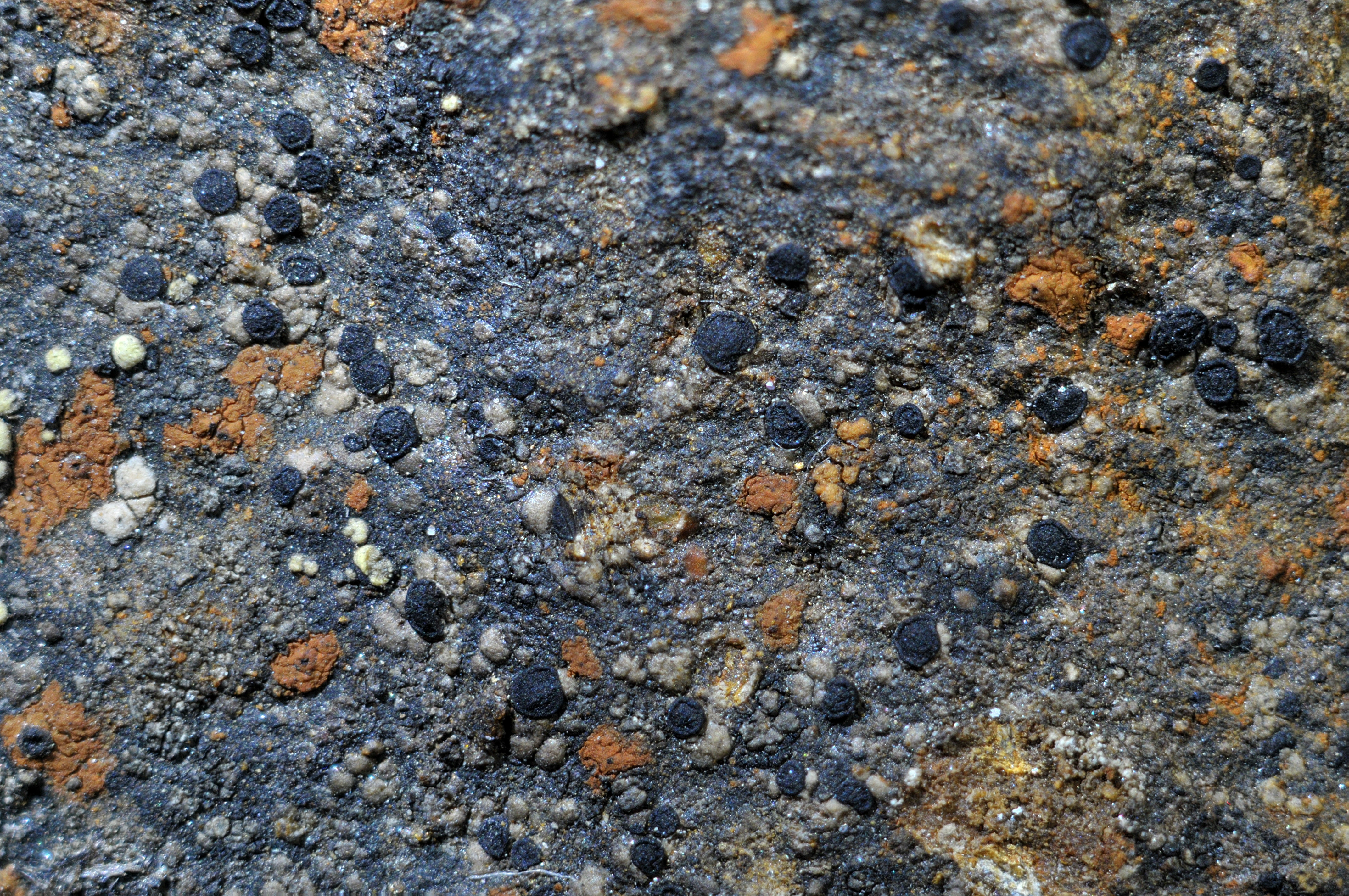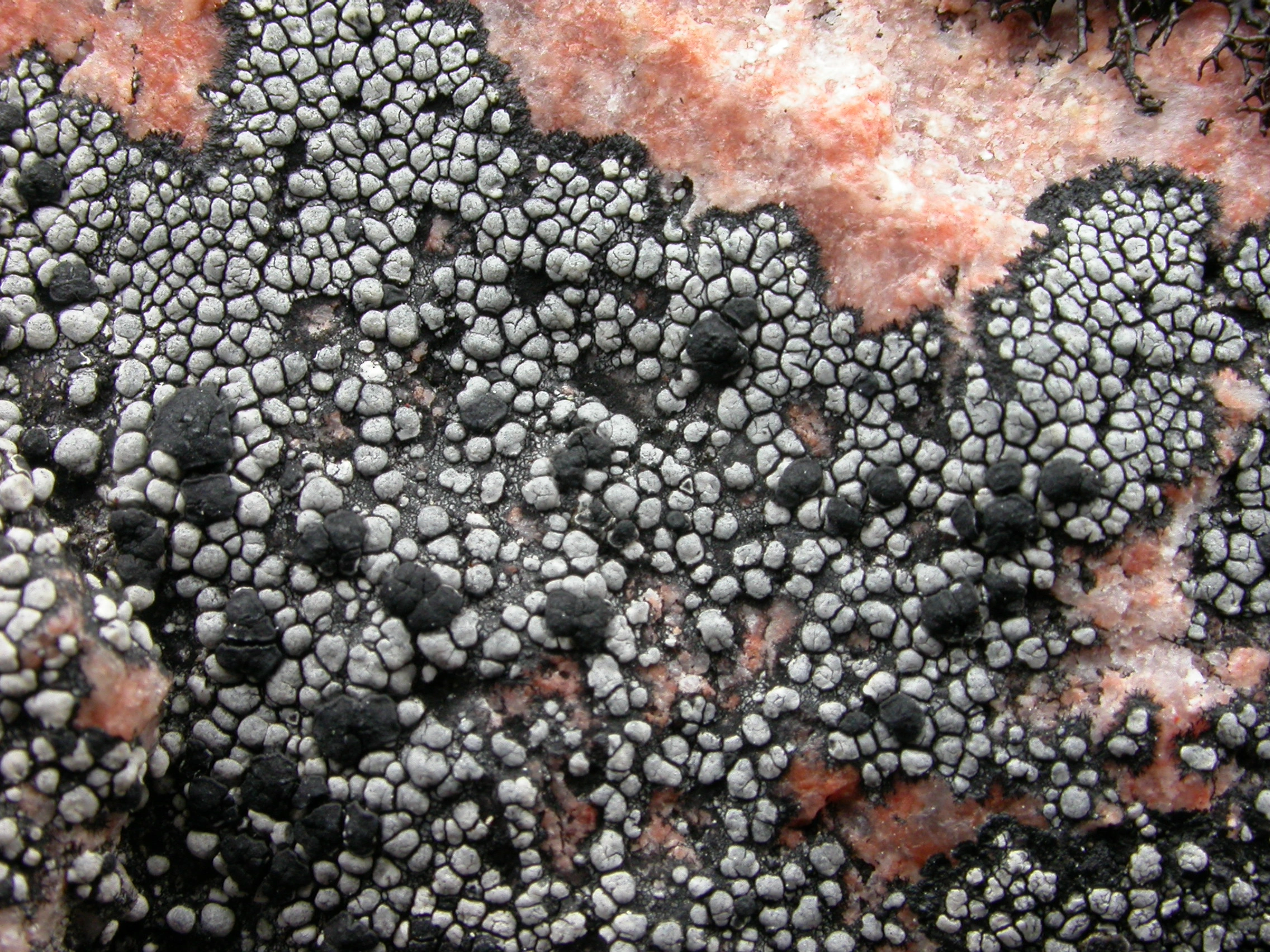Rhizocarpon cinereovirens
- Innhold
- Morphology
- Chemistry
- Habitat
- Comment
- Look-alikes
Morphology
Thallus areolate, up to 5 cm diam.; hypothallus usually well developed, black; areolae up to 0.5 (–0.8) mm diam., pale grey to medium grey, dull, contiguous, more or less orbicular, moderately to strongly convex or sometimes partly hemispherical; medulla KI–. – Apothecia up to 1 mm diam., black, epruinose, orbicular to somewhat angular, persistently plane to slightly convex, with a thin and persistent margin; excipulum brownish black in the rim, inner part paler brown, containing crystals dissolving in K, K+ red (forming acicular crystals); hypothecium reddish brown, K–; hymenium colourless, containing crystals dissolving in K; epihymenium olivaceous green to greenish black, K– (turning more brightly green); ascospores 8 per ascus, 1-septate, persistently colourless or becoming faintly brown with age, 15–24 × 6–9 µm. – Conidiomata not seen.
Chemistry
Norstictic acid; spot tests: thallus and exciple PD+ yellow, K+ red, C–.
Habitat
On siliceous rock in the lowlands. Sparingly collected, but probably rather common.
Comment
Both R. glaucescens and R. eupetraeum have a pale grey thallus reacting K+ red (norstictic acid), but the former has a dark brown, K+ red, epihymenium and smaller ascospores, and the latter has larger, muriform, dark brown ascospores.


